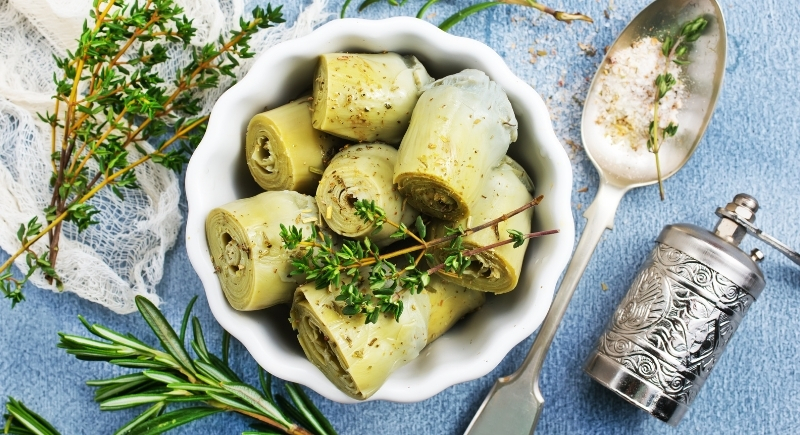How One Woman Revolutionized American Kitchens Without Leaving Her TV Studio
Julia Child didn’t grow up dreaming of becoming America’s favorite cooking teacher. She was born in 1912 and was raised on meat-and-potatoes meals in Pasadena before spending most of her early life working in advertising and volunteering during World War II. Her father, “Big John,” dismissed Europeans as dirty and pretentious, and Julia absorbed plenty of that bias.
When she finally moved to France with her husband, Paul, in 1948, she expected the worst. But the meal she had there changed her life. A lunch of oysters, sole meunière, and wine in Rouen opened her eyes to flavors she didn’t know existed. She dove into the Parisian markets and signed up for professional training at Le Cordon Bleu, only to face male classmates who viewed her as an intruder.
Writing A Cookbook and Cooking For The Camera

Image via Wikimedia Commons/Lynn Gilbert
By 1952, Julia had teamed with Simone Beck and Louisette Bertholle to start a cooking school and join their long-running cookbook project. Publishers doubted their thick manuscript, claiming it was too complex for American homemakers to comprehend. Julia tested recipes endlessly, reworking each until it was both authentic and doable with U.S. ingredients.
Judith Jones at Knopf finally saw its potential, and “Mastering the Art of French Cooking” was published in 1961. Critics like Craig Claiborne praised its precision, but Julia’s rise was just beginning. Television, not print, would turn her into a celebrity and bring French food into millions of homes.
Her TV career began when she cooked live on a Boston book show to promote the cookbook. She wasn’t polished, but she was funny, warm, and unafraid of mistakes. Fans loved watching her scrape food off the counter or laugh when something flopped. WGBH quickly gave her a show, and “The French Chef” launched in 1963. It ran for a decade on a shoestring budget, often filmed in one take. Julia connected with people because she made cooking look like play, and her enthusiasm turned a once-dry TV genre into something people watched for fun as much as instruction.
Challenging Old Rules

Image via Canva/Yana Gayvoronskaya
Julia’s timing was perfect. American kitchens in the 1950s and early 1960s leaned heavily on frozen dinners, mayonnaise-based “salads,” and canned vegetables. She pushed against that by showing viewers fresh artichokes, herbs, and dishes with authentic flavor. Considering that she stood 6’2” tall with a singsong voice, she didn’t fit the mold of the domestic woman, yet her authority and relatability drew people in. She also broke through the idea that men owned fine cuisine while women just put dinner on the table.
Later in life, she faced her own blind spots. At first, she made dismissive remarks about the LGBT community. After her attorney and close friend Bob Johnson fell ill with AIDS, she softened, cared for him, and spoke publicly about the epidemic in 1988, when many well-known figures avoided the subject.
Bon Appétit for Life
Julia Child changed how people thought about cooking. She demonstrated that mistakes were an inherent part of the process and that joy mattered just as much as technique. Her growing popularity helped other international cookbooks find publishers, like Marcella Hazan’s Italian guides and Madhur Jaffrey’s work on Indian food. Supermarkets expanded to carry better produce, cheeses, and herbs, while cookware companies thrived as people copied what they saw in her Cambridge kitchen.
When Julia donated that kitchen to the Smithsonian in 2001, it joined national treasures like the Wright brothers’ plane and Lincoln’s hat. She stayed on television for decades, and even in retirement, continued to inspire home cooks to make meals worth sharing. By the time she passed away in 2004, shy of her 92nd birthday, American kitchens were brighter and far less afraid, thanks to the tall woman who always signed off with “bon appétit.”